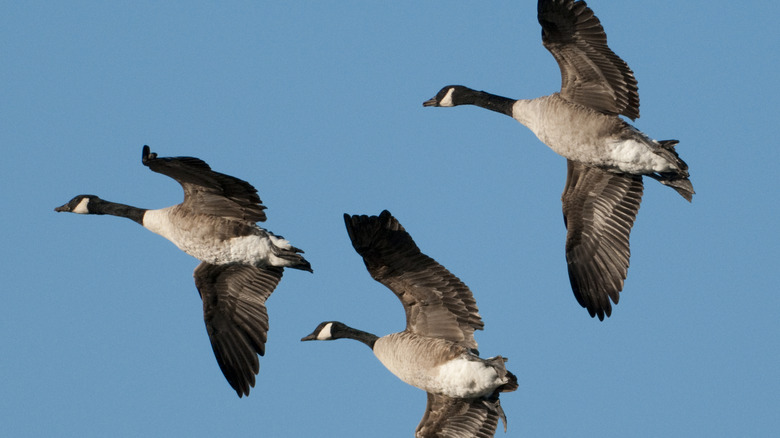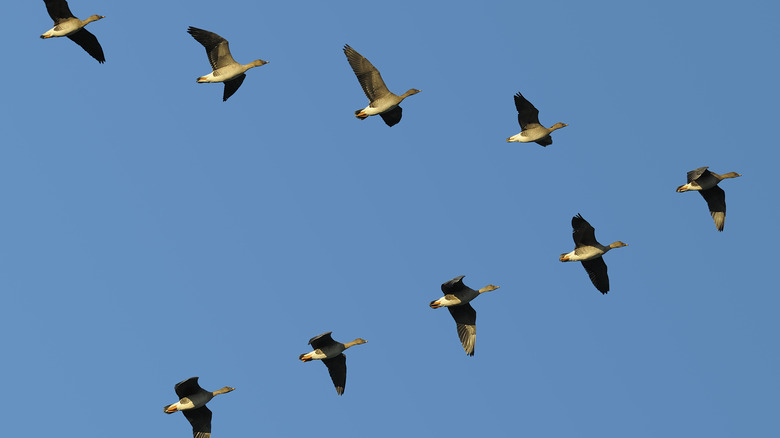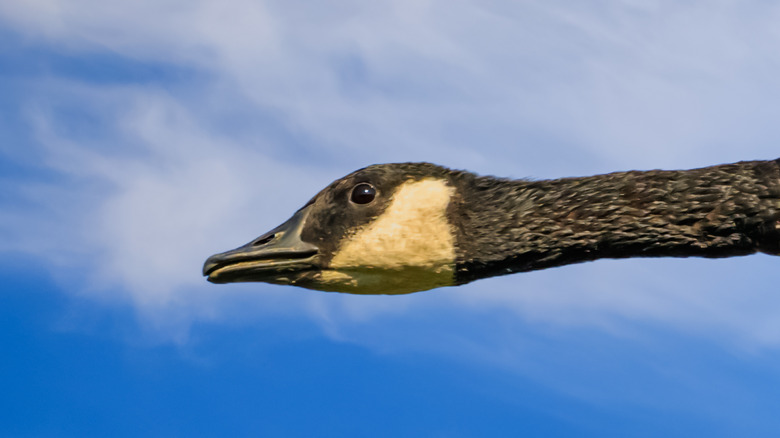Why Do Geese Fly In A V Formation?
It's one of those funny little fixtures of nature that you see so often you forget to ask why it's happening. Geese, when they're not disrupting your golf game by waddling and squawking around the fairway, take to the skies like many other winged beings on the plant (with the exception of penguins, of course), and when they do, they have a tendency to position themselves in the shape of a regal-looking "V."
Ducks, swans, and other types of large birds do the same thing when they travel long distances as a flock, sometimes migrating for several thousand miles at a time (via Garden Bird Feeder). Flamingos, too, will tuck up their long legs and travel together in a V formation.
There are a few different reasons why geese are known to employ this tactic, and it's not just for aesthetic purposes. According to various scientists, there are two primary reasons why this aerial phenomenon arises.
Mutual gust
Aerospace engineers Peter Lissaman and Carl Shollenberger performed a series of studies in the 1970s that focused on geese and their remarkable inclination to fly in such a disciplined manner. They determined that there is mutually pragmatic merit in the V-shaped flying pattern. Essentially, it becomes a matter of energy efficiency. When a goose flaps its wings, the motion creates something called wingtip vortices. Wingtip vortices are the circular, rotating forces of wind that surround the ends of a goose's wings when they're in motion (per Mental Floss).
The vortices push air downward and upward in various spots, and when geese position themselves in the shape of a V, each bird is in the direct path of the vortices produced by the goose ahead of them. In effect, the wind pushed back down the line provides an extra burst of air beneath the wings of each goose, which means they don't have to flap as hard and are able to conserve their energy, therefore helping them to travel longer distances at a time (via Mental Floss).
Age before beauty?
Despite the fact that wingtip vortices are very much active and beneficial when geese position themselves in the shape of a V, not every bird gets the same injection of air from the one ahead of them. Therefore, energy savings aren't always equal. However, researchers have discovered another reason why the V shape is useful for migratory birds like geese. A V angle of 29 degrees or more allows each bird within the group to see the other, so navigation and communication are optimally ascertained during long journeys. Given a goose's line of vision, "blind spots" are more or less totally eradicated when the group forges itself into the shape of a V (per Mental Floss).
But what about the goose in charge? Who gets the honor of leading the troupe at the head of the angular procession and why? The older birds with more experience and geographic familiarity are better able to lead the group, whereas younger members with less traveling experience are more likely to lead the flock astray. The elders are more often granted the task of leadership. However, everyone tires eventually, so it isn't unusual for leaders to swap out from time to time in order so that the lead bird can fall back and rest (via My Nature Nook).


